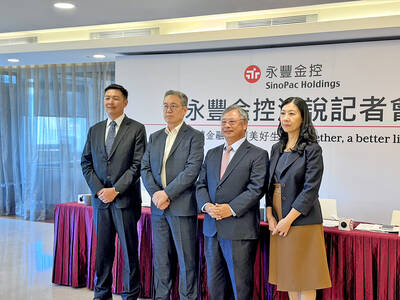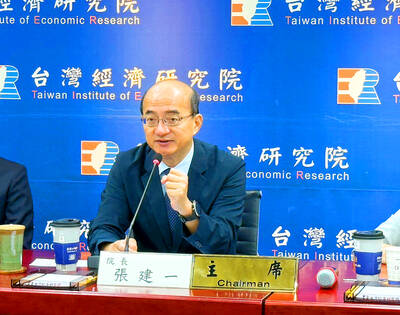Gold on Friday hit a more than three-week high, amid speculation that the US Federal Reserve could slow the pace of interest rate increases as the US economy slows.
Bullion’s climb, supported by a weaker US dollar and declining US Treasury yields, saw spot gold gain about 0.4 percent to US$1,762.50 an ounce to post a second straight weekly gain.
While the Fed raised rates by 75 basis points again this week, data showing that the US is in a technical recession signaled that the central bank could become less aggressive as it continues to combat inflation.
Despite the recent rebound, gold recorded a fourth straight monthly loss.
US Secretary of the Treasury Janet Yellen gave a glass-half-full assessment of the economy, acknowledging a slowdown she called necessary to tame inflation, while rejecting the notion the country had entered a recession.
“Gold bugs are falling like dominoes, but given the slowing trend in growth, [US Fed Chairman Jerome] Powell catalyzed a short covering rally across all assets by tying a jumbo-sized September hike to data. Gold markets are set-up for additional price weakness to ensue,” TD Securities senior strategist Daniel Ghali said in a note.
Investors are likely to turn their focus to next week’s monthly jobs report from the US government, which is forecast to show another solid month of hiring.
Powell said the labor market remains “extremely tight,” referencing a near-record number of job openings and historically low unemployment.
“If the US economic data turn out to be weaker next week, gold is likely to make further gains,” Commerzbank AG analyst Carsten Fritsch said in a note.
“This applies in particular to the report on the labor market, as Fed Chair Powell has still been describing the market as robust, which besides the persistently high inflation is another argument in favor of further rate hikes,” Fritsch said.
Other commodities:
‧Silver for September delivery rose US$0.33 to US$20.20 an ounce, up 8.49 percent from a week earlier, while September copper rose US$0.10 to US$3.57 a pound, gaining 6.57 percent weekly.
Additional reporting by Reuters and AP

SETBACK: Apple’s India iPhone push has been disrupted after Foxconn recalled hundreds of Chinese engineers, amid Beijing’s attempts to curb tech transfers Apple Inc assembly partner Hon Hai Precision Industry Co (鴻海精密), also known internationally as Foxconn Technology Group (富士康科技集團), has recalled about 300 Chinese engineers from a factory in India, the latest setback for the iPhone maker’s push to rapidly expand in the country. The extraction of Chinese workers from the factory of Yuzhan Technology (India) Private Ltd, a Hon Hai component unit, in southern Tamil Nadu state, is the second such move in a few months. The company has started flying in Taiwanese engineers to replace staff leaving, people familiar with the matter said, asking not to be named, as the

The prices of gasoline and diesel at domestic fuel stations are to rise NT$0.1 and NT$0.4 per liter this week respectively, after international crude oil prices rose last week, CPC Corp, Taiwan (台灣中油) and Formosa Petrochemical Corp (台塑石化) announced yesterday. Effective today, gasoline prices at CPC and Formosa stations are to rise to NT$27.3, NT$28.8 and NT$30.8 per liter for 92, 95 and 98-octane unleaded gasoline respectively, the companies said in separate statements. The price of premium diesel is to rise to NT$26.2 per liter at CPC stations and NT$26 at Formosa pumps, they said. The announcements came after international crude oil prices

SinoPac Financial Holdings Co (永豐金控) is weighing whether to add a life insurance business to its portfolio, but would tread cautiously after completing three acquisitions in quick succession, president Stanley Chu (朱士廷) said yesterday. “We are carefully considering whether life insurance should play a role in SinoPac’s business map,” Chu told reporters ahead of an earnings conference. “Our priority is to ensure the success of the deals we have already made, even though we are tracking some possible targets.” Local media have reported that Mercuries Life Insurance Co (三商美邦人壽), which is seeking buyers amid financial strains, has invited three financial

CAUTION: Right now, artificial intelligence runs on faith, not productivity and eventually, the risk of a bubble will emerge,’ TIER economist Gordon Sun said Taiwanese manufacturers turned more optimistic last month, ending a five-month streak of declining sentiment as concerns over US tariffs, currency volatility and China’s overcapacity began to ease, the Taiwan Institute of Economic Research (TIER) said yesterday. The manufacturing business confidence index rose 1.17 points from June to 86.8, its first rebound since February. TIER economist Gordon Sun (孫明德) attributed the uptick to fading trade uncertainties, a steadier New Taiwan dollar and reduced competitive pressure from Chinese producers. Taiwan’s semiconductor industry is unlikely to face significant damage from Washington’s ongoing probe into semiconductors, given the US’ reliance on Taiwanese chips to power artificial